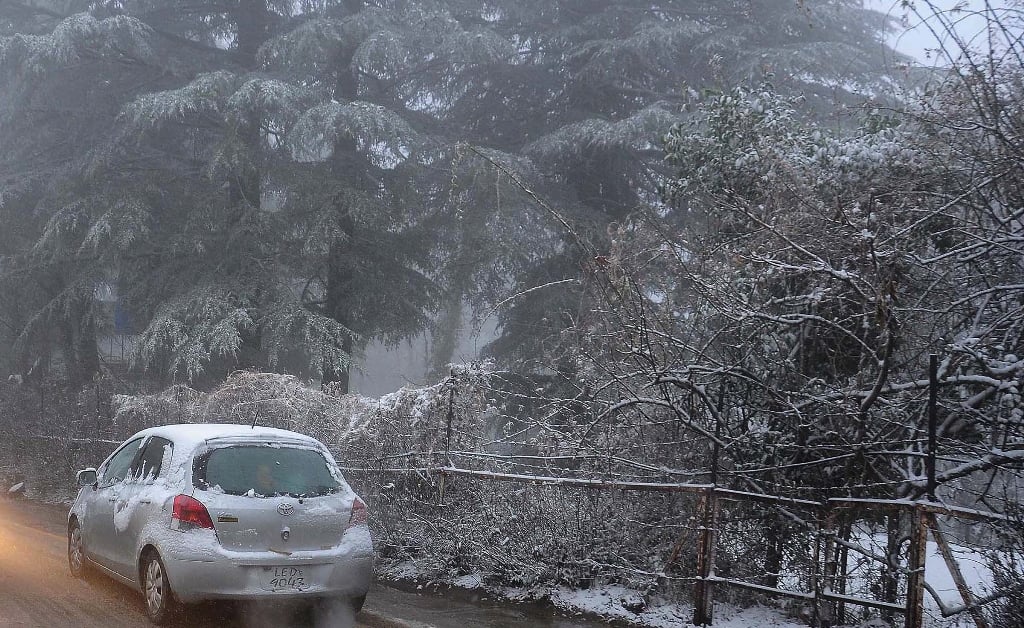
Unbeknown to itself, the animal is a national symbol of the people that dwell in the plains south of the mountains. Why did the people choose it as their national symbol? Perhaps, the answer lies somewhere in the will to survive.
It has been a few months since the little markhor came into this world. Still young and dependent upon its mother for survival, the little baby is slowly adapting to its surroundings. The world that the markhor has come into is fraught with danger. The mountains that it calls home make for a tough environment to live in. Food is scarce and found mostly in hard-to-reach places. Conditions are harsh, and danger is never far away. Terrain is not the only enemy of the markhor. There are dangerous predators lurking around. None more dangerous than the snow leopard.
A particular snow leopard is on the prowl. Hungry for days, it is looking for its next hunt. The old leopard has a keen sense of sight, nimble feet, agility, and a killer instinct natural to the feline kind. It has gone hungry for a very long time and it needs to eat soon. It sees the baby markhor that has strayed away from its mother while searching for food. The opportunity is there for the taking. Displaying the hunting skills honed over a million years, the snow leopard approaches its prey. It moves slowly, cautious so as not to make any sound, and positions itself on a rock just above its unsuspecting prey. It has done well to get this near to its prey. And then it pounces.
Survival instinct, the gift of nature to all living beings, does what it is meant to do. A split second, the time it takes for the leopard to jump and get to the markhor, is enough for the markhor to react. The markhor makes a dash on the steep slopes of the Himalayas. It twists and turns, feints and jumps, avoiding its hunter. Suddenly it reaches an edge. With nowhere to run, it looks down and sees the raging river below. Out of sheer instinct, it jumps.
The current is strong and the water freezing cold. The markhor experiences fear. Having lost hope, the markhor resigns to its impending doom. Suddenly something within the markhor jolts its limbs into action. The will to live comes to its rescue again. Using all its strength and will to survive, the kid starts kicking in the water. The kicks become powerful strokes and the markhor survives the danger. It finds its way back to its mother. Over time it ages, becoming stronger and proud. Its indomitable nature and strength inspires those who see it. It draws admiration from those who see what it really is — a fighter.
Perhaps this is why it’s the most suitable choice for being a symbol of Pakistan and its people. For the story of the markhor is not just its story. It is the story of a people who live on its land. Their history has been marred by challenges and difficulties. Tough conditions and inadequate resources have troubled the land. Hate and bigotry, amongst other predators tearing the people apart, are their biggest predators. But amidst all the challenges and difficulties, the will to live, and live in a way that is their own manifests itself time and again. They have struggled and experienced hardships.
But now is the time for people to take inspiration from the magnificent markhor, to realise that it is within them that they should look for salvation, and it is only through struggles and belief in their own potential that they can ensure a more secure future. For this they need to fight. Fight against the forces of oppression that seek to take away their freedoms and destroy their will.
Published in The Express Tribune, August 4th, 2014.
Like Opinion & Editorial on Facebook, follow @ETOpEd on Twitter to receive all updates on all our daily pieces.
COMMENTS (2)
Comments are moderated and generally will be posted if they are on-topic and not abusive.
For more information, please see our Comments FAQ


















The writer has already come home and is offering his services to the Government. I hope his endevours bear fruit and others can follow in his footsteps.
...... "Fight against the forces of oppression that seek to take away their freedoms and destroy their will."
Excellent advice indeed!
But who will unite the masses, organise them, show them the "forces of oppression", and lead them in their fight? Can any one of the Zardaris, Sharifs, Qadris or Imrans or all the other so-called leaders fill the void? Can anyone suddenly appear to take up the Quaid’s position? No chance.
The writer has certainly made good use of his time at LUMS and the George Washington University, but will he attempt to reduce the wide gap between himself and an illiterate poor villager in FATA? Will he come home and be the desperately needed visionary and THE LEADER? Only then will his endeavours bear fruit. A study of The French Revolution will certainly help.